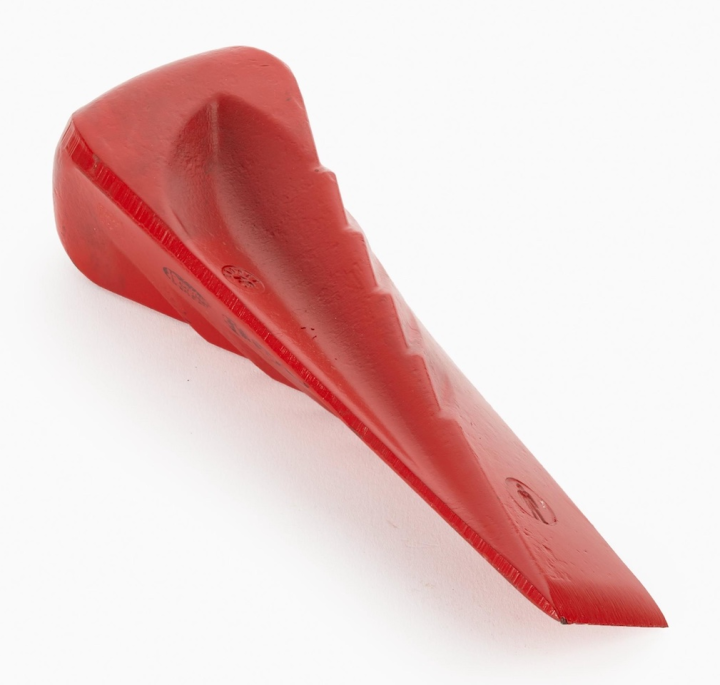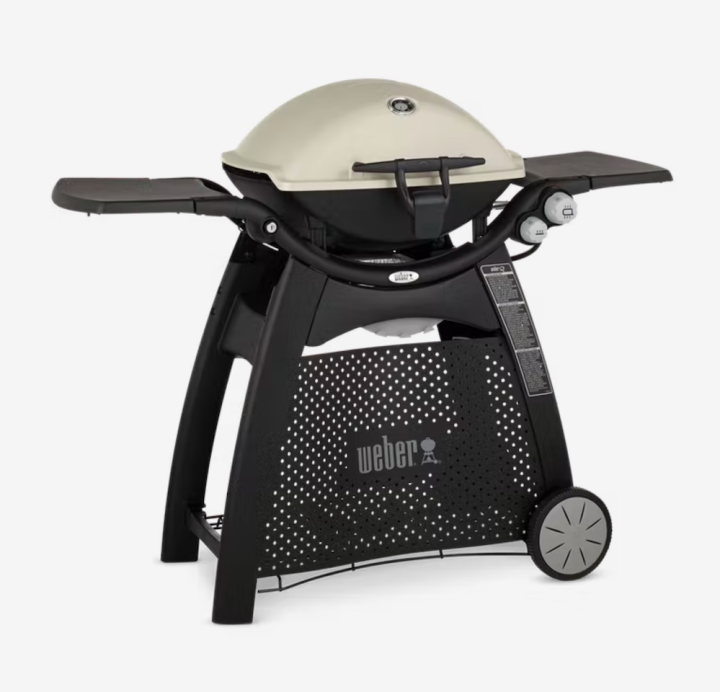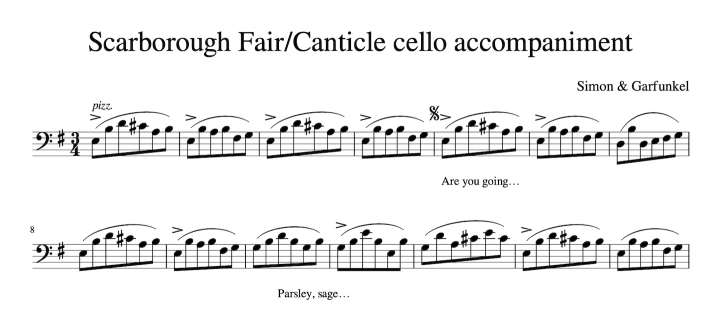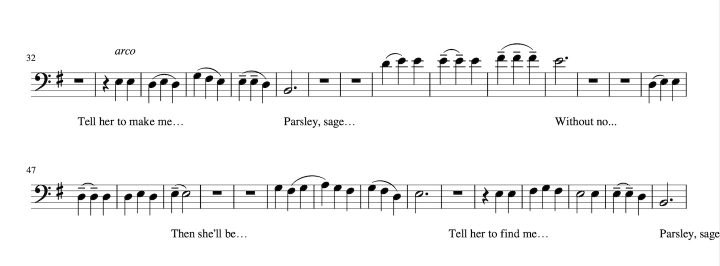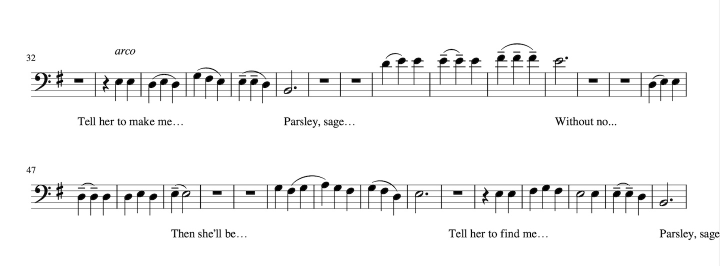
[This fragment is available in an audio version.]
We live in a world of things that have Product Managers and Design Teams and Documentation Architecture and often vast ambition. And yet, so many of them are so bad. And worse, some which are good then become bad for no good reason. There is a particular joy in a product that just does what you need done, in about the way you expect or (thrillingly) better, and isn’t hard to figure out, and doesn’t change unnecessarily. Here are three to learn from.
Splitter · At our cabin, we have reasonably modern electric heat that keeps things comfy, but for our occasional winter visits we also have a nice efficient wood-stove. Because we are surrounded by 100+-year-old forest, some of which falls down (or, rarely, is cut if it threatens to fall in the wrong place), there’s plenty of wood to burn. But it comes in big pieces which have to be sawed down to short sections then split into pieces small enough to fit into the stove.
Normally, splitting wood is a joyous form of light exercise — hit the end of the fragment with a decent axe, put a little oomph in it, and the wood springs apart. Very satisfying. But certain pieces of wood are some combination of hard and knotty and twisted and big. Even a reasonably skilled wood-splitter can be driven to distraction.
For these, what you need is this Spiral Splitting Wedge, which I bought from Lee Valley. You position it judiciously against the end of the fragment, and pound away with a hammer; I use a nice little one-hand 4lb sledge, which seems about right. You don’t have to hit it that hard, just enough for the blade to bite, then the combination of the wedge’s spread and its spiral twist inexorably rips apart the awfulest, gnarliest firewood. Not quite as satisfying as an axe on a clean straight piece, but then few things are. Just Works. Is cheap.
Then you curl up on the sofa facing the stove, feeling virtuous while the rain lashes the windows and metal roof, and watch the kids toast marshmallows.
I’m pretty sure the design of this product hasn’t changed in my lifetime. And I live without fear that it will change, because the one we have will definitely be working long after I’m gone.
BBQ · Our cabin barbecue died as a consequence of being left out in the rain too much during the current renovation. It was at least a decade old, and we replaced it with the current equivalent model, a Weber Q 3200 (link is to the Canadian site) because it’s compact, easy to roll around, and can feed 8 people with a little cooking forethought and ingenuity.
Compared to the model it’d just replaced, the changes were subtle and thoughtful: A slightly slicker tank retainer, a better spark mechanism, and an elegant little light placed just right for those times you’re cooking after dark.
Why am I so excited about this decent but pedestrian product? Partly because it hasn’t changed; the design is pretty well correct and no hyperoverentitled Product Manager has been allowed to introduce any Bold New Paradigms.
But the great thing, the truly great thing, is the assembly directions. There are a quite a few pieces, but they all fit together in only one way, which is the right way, and they snap into place, and the directions illustrate each step in a way that no-one, no matter how clueless, can misinterpret. You go from flat-pack to working BBQ in an astonishingly short time with not a single good reason to swear.
This appeals to a lot of my core values.
And should you get an invitation to our cabin, I’ll demonstrate the machine’s excellence with a hearty serving of Eastern-Mediterranean chicken kebabs (Arabic: شيش طاووق; Hebrew: שישליק עוף; Turkish: tavuk şiş). They have reduced strong men to tears of joy.
Music writer · My music teacher sent me a Rumba score we were going to work on, which meant picking up the MuseScore app. I hadn’t used it in years, but as soon as I opened it I smiled, because it’s truly great software. Now, you have to know how to read music and the names of the glyphs and markers that appear in it. But if you do, you can teach yourself in almost no time to produce a pretty damn decent-looking score and do so quickly.
I don’t remember ever opening a tutorial or reading a HOWTO; the first time I wanted to capture some music, I just opened it up, dived in, and figured it out.
When was that first time? Last century when I was studying cello, my teacher, a couple times a year, held friends-and-family recitals that filled most of a medium-sized church; they were fun!
One time I performed a duet with my wife Lauren, who has a light, soaring soprano; an arrangement I made of Simon and Garfunkel’s Scarborough Fair/Canticle. For the first part I just played chordal pizzicato background to her voice. For the middle part, with the two voices, the cello took the second, with lots of legato. I think the voice/cello trade-off sounded intense and lovely, and we got a nice round of applause. Here’s a sample of the main and middle sections.
· · ·
In case anyone out there plays the cello (or any other alto-to-bass register instrument) and wants to take a run at this, here’s the music. It doesn’t include full lyrics or the vocal line but that’s OK because I bet most singers already know it and will be comfy in E minor.
At the event, I used a hand-written score, where by “written” I mean “scribbled”; my handwriting is terrible and that includes music. A couple of fellow students asked for copies so I downloaded MuseScore and within a couple of hours, I had it. When I fooled with that Rumba just recently, I found it similarly effortless.
But wait, there’s more! · The MuseScore app is open-source, free, standards-compliant, well-documented and seems to have a lively community around it. I suspect this is because whenever you’re in a roomful of serious software practitioners, the proportion that are competent amateur musicians is going to be way higher than in the general population. So the number of people who combine programming talent and music literacy isn’t small.
It’s 2022 and the world is terrible but still has good things in it. We need more like these, please.
如有侵权请联系:admin#unsafe.sh
